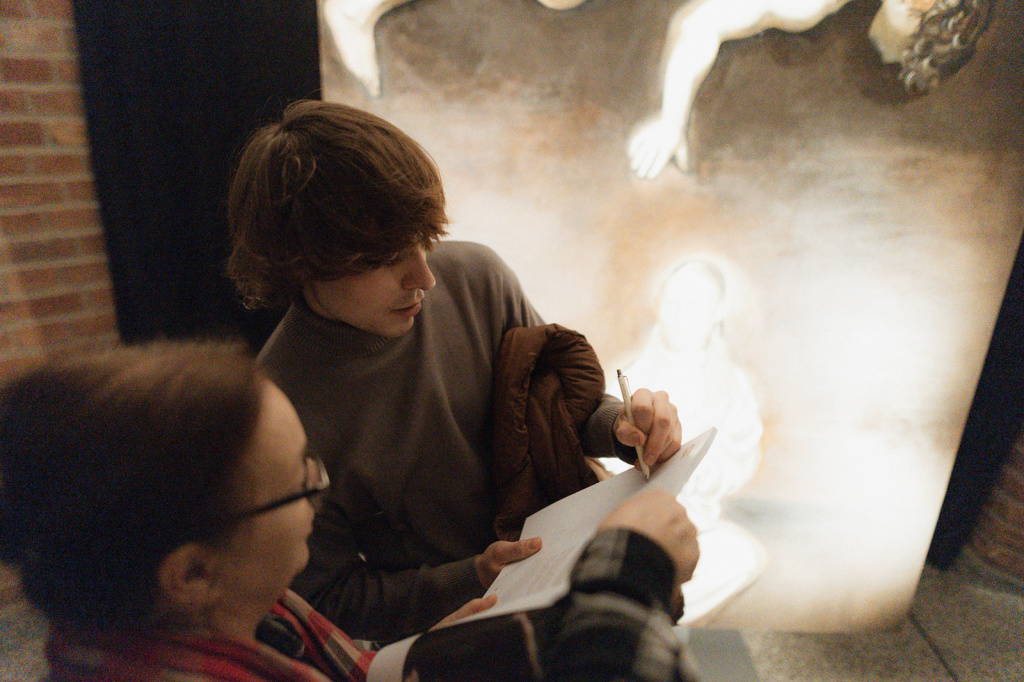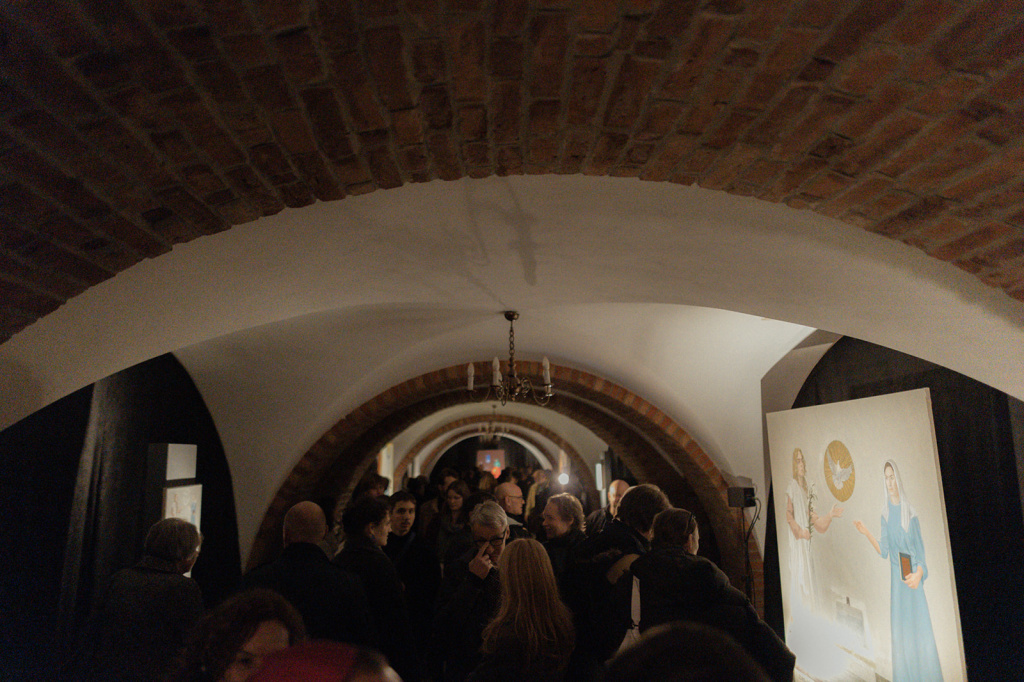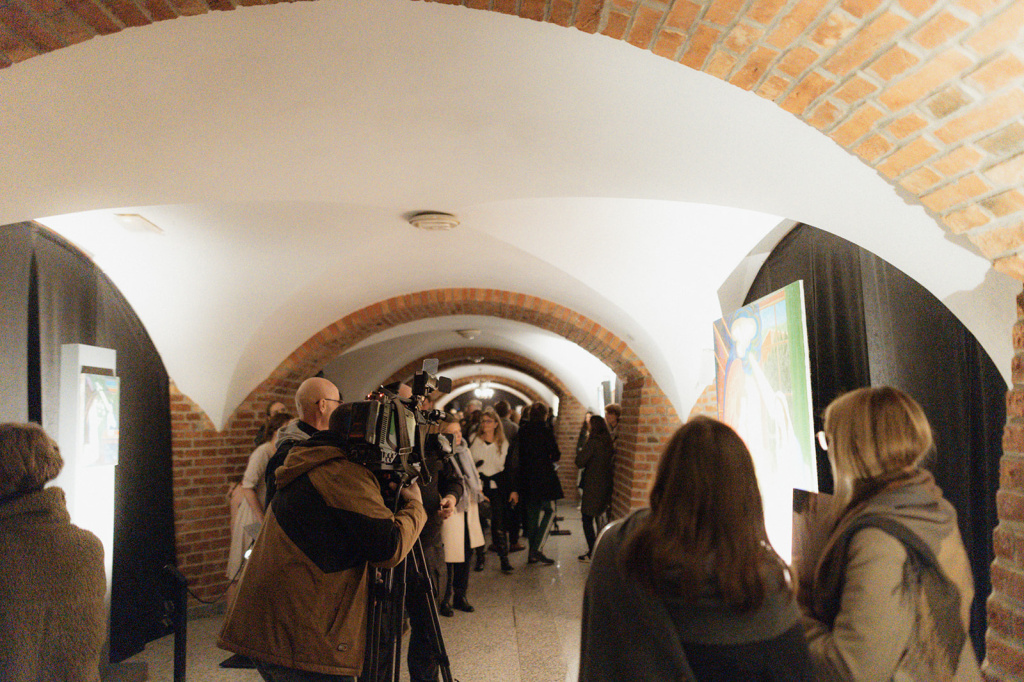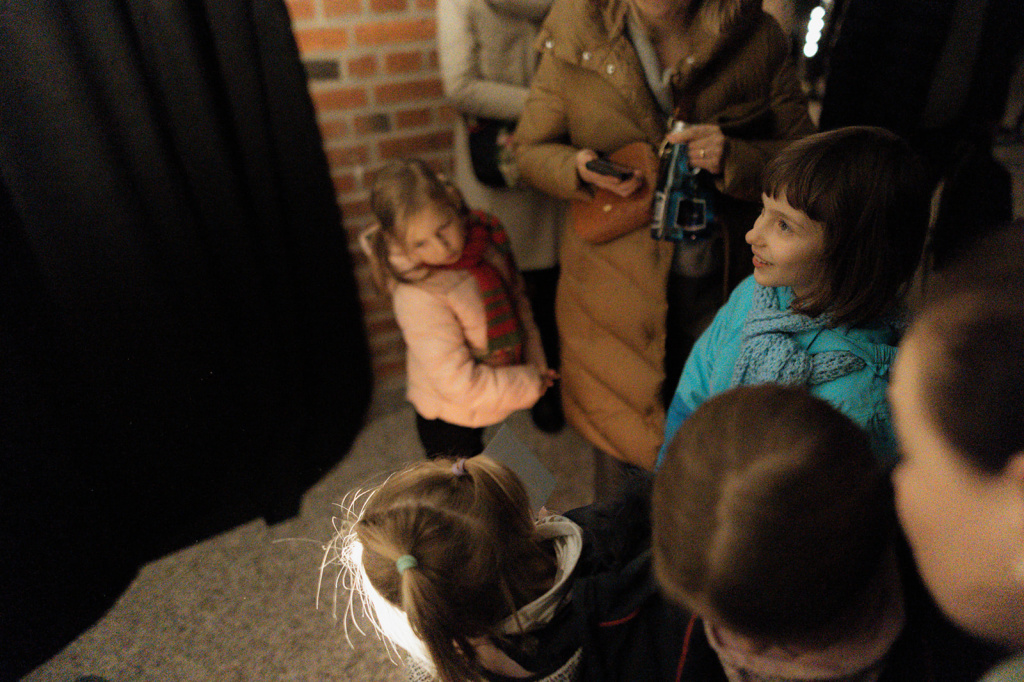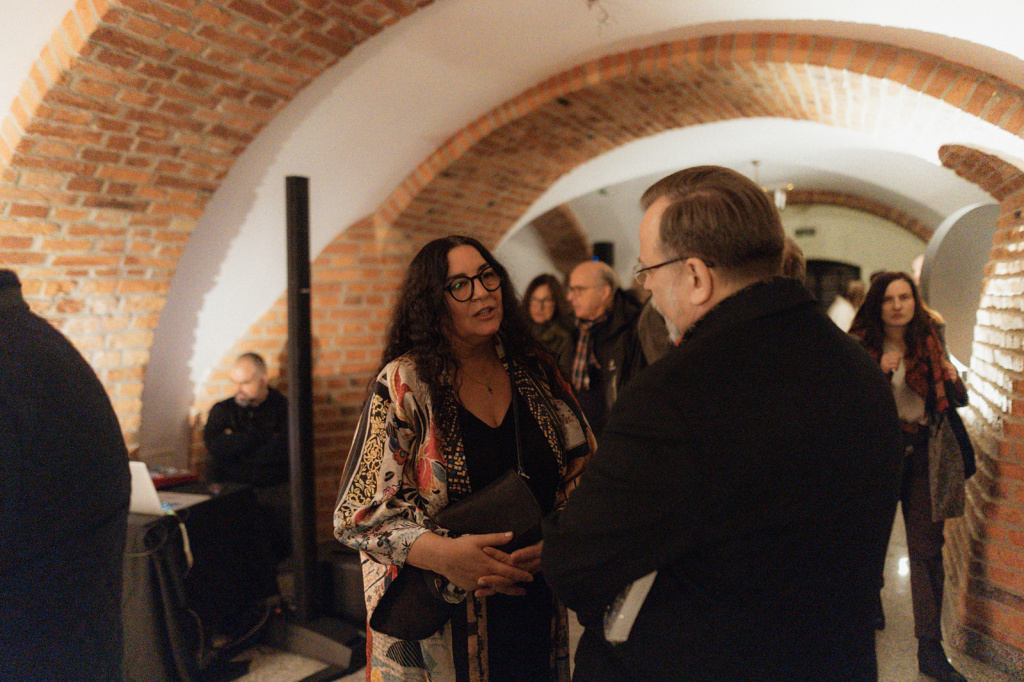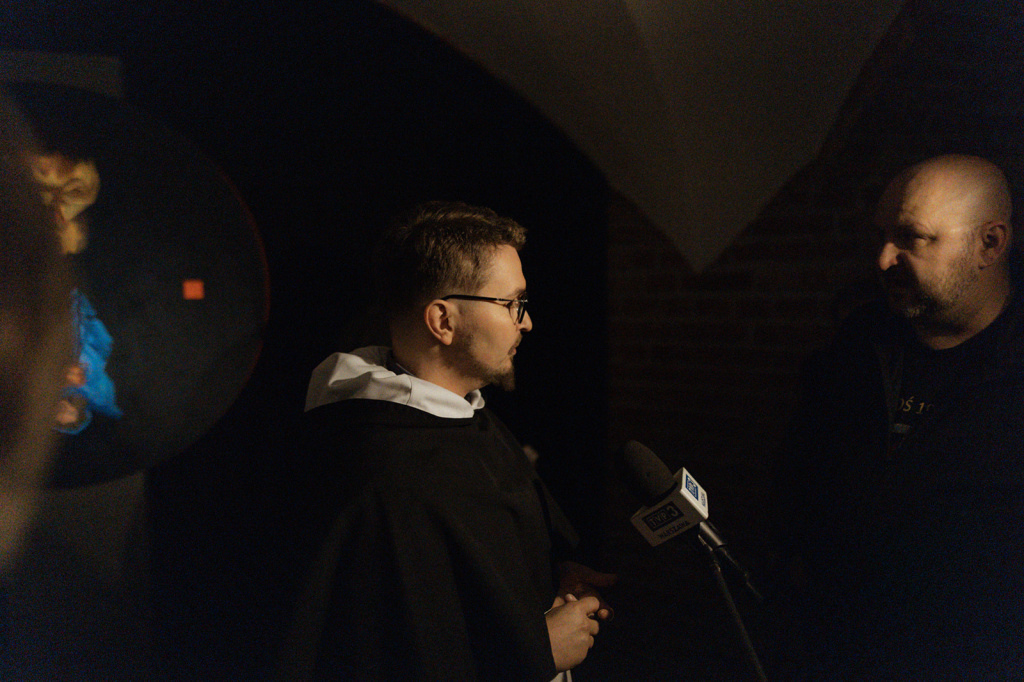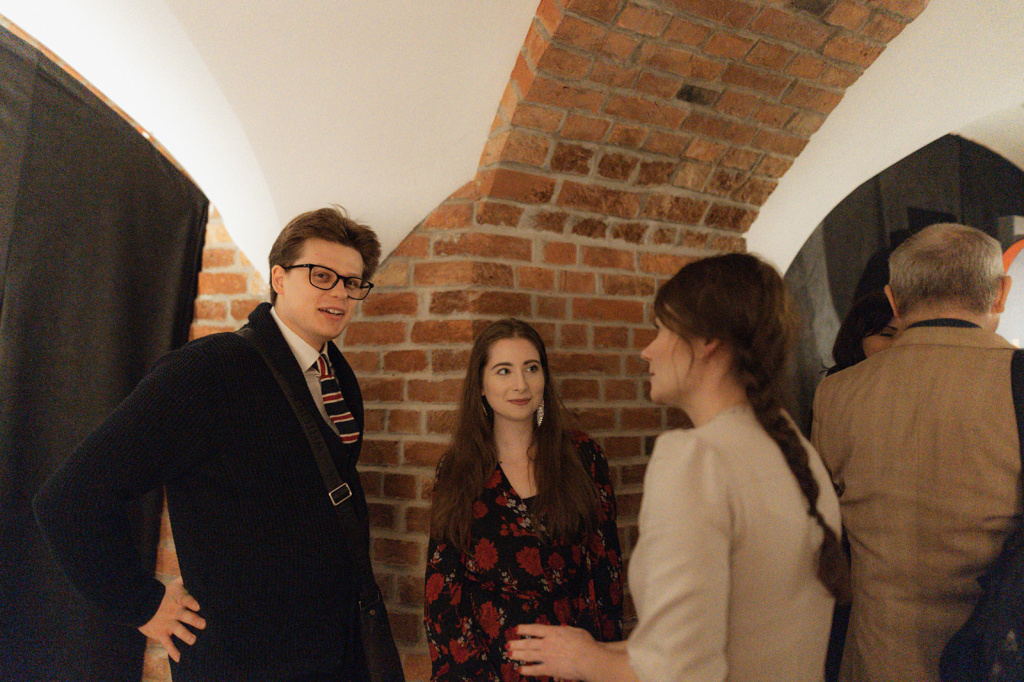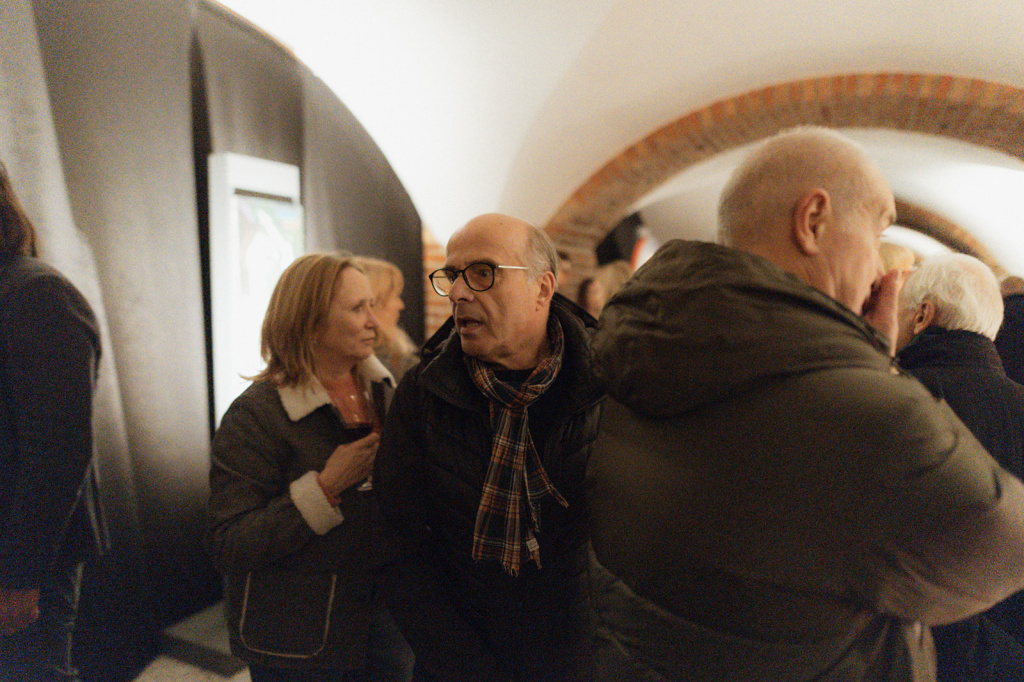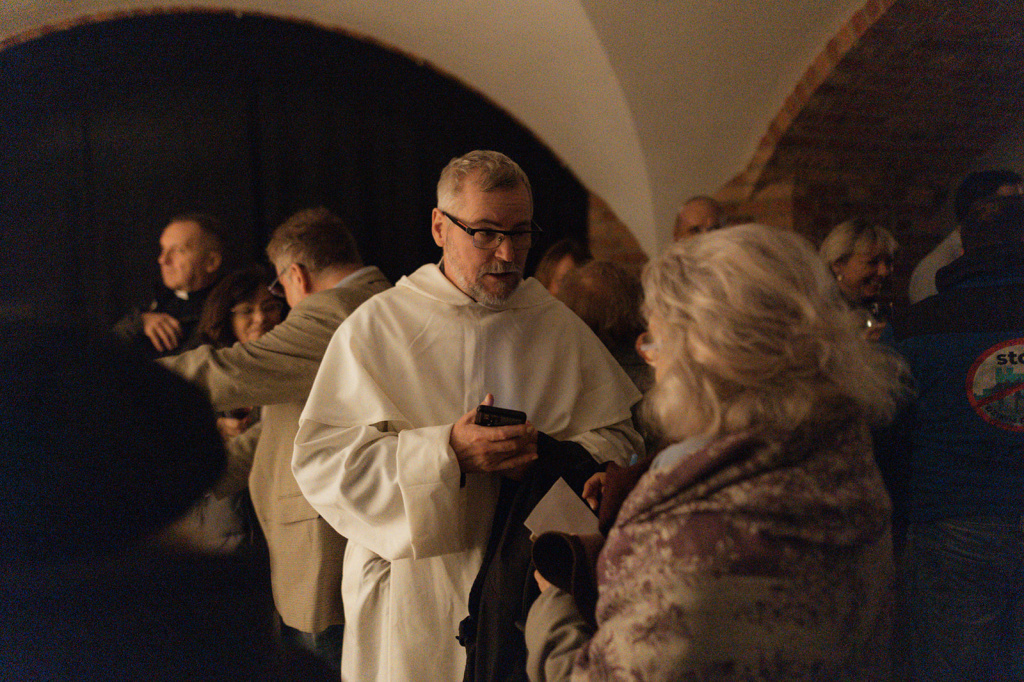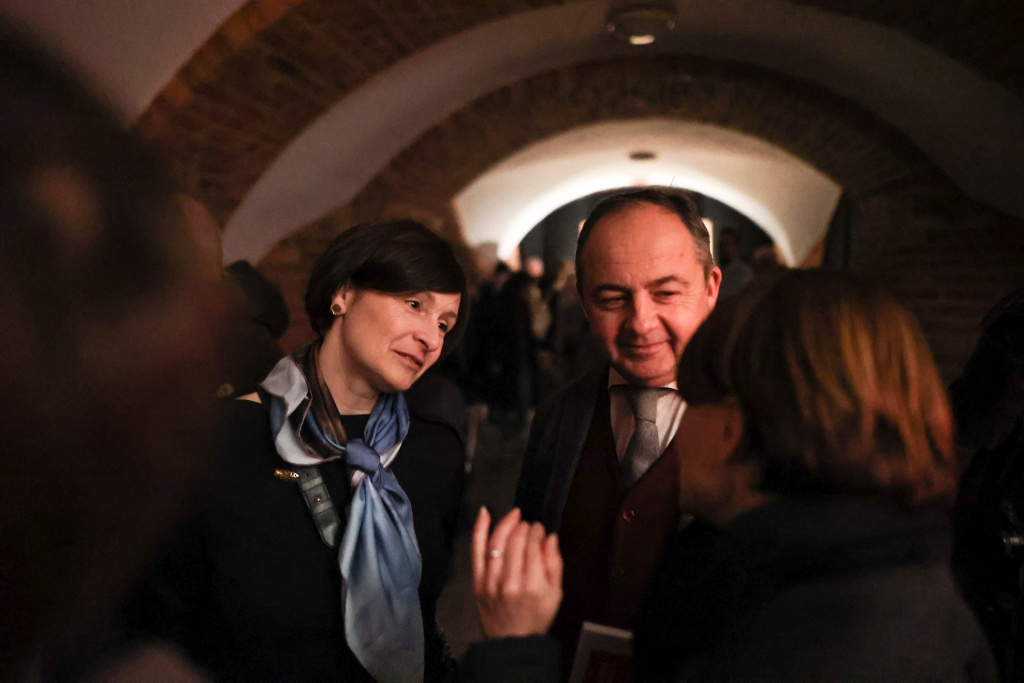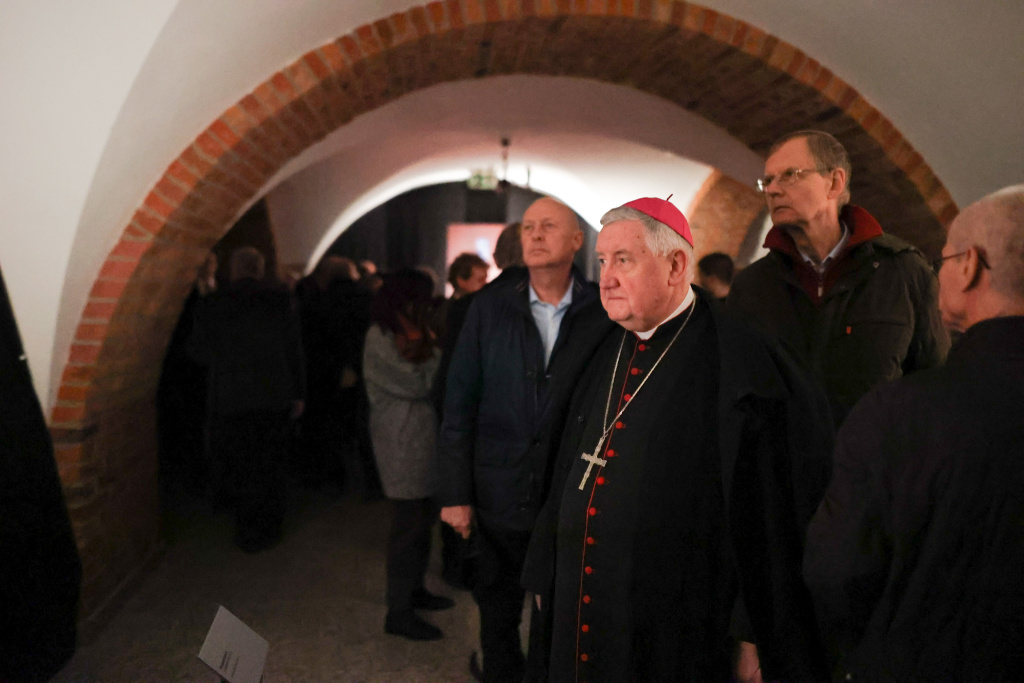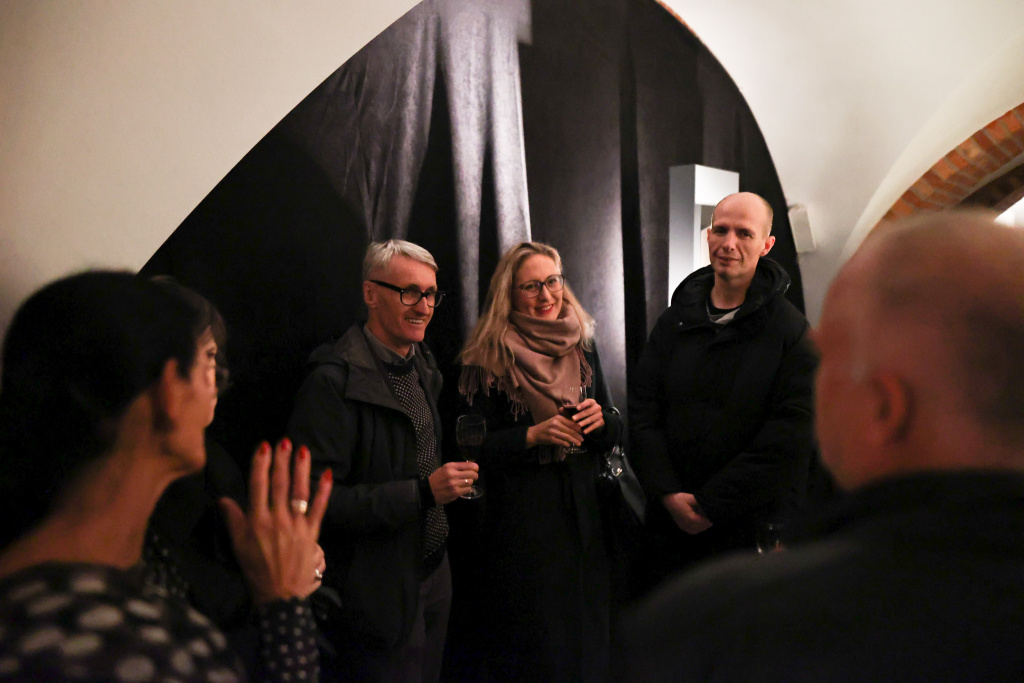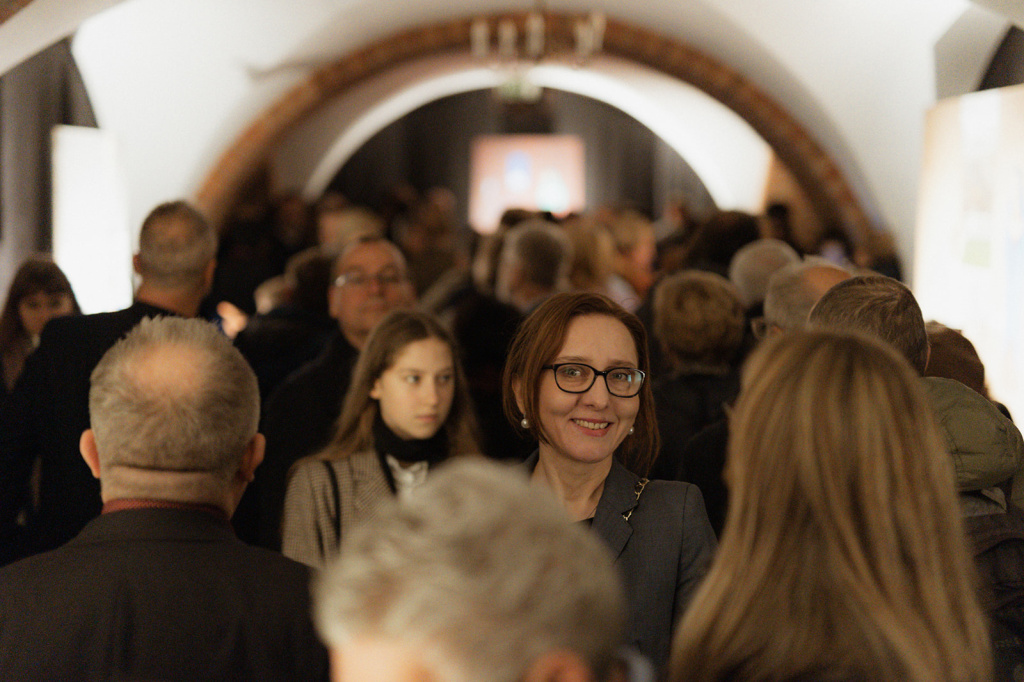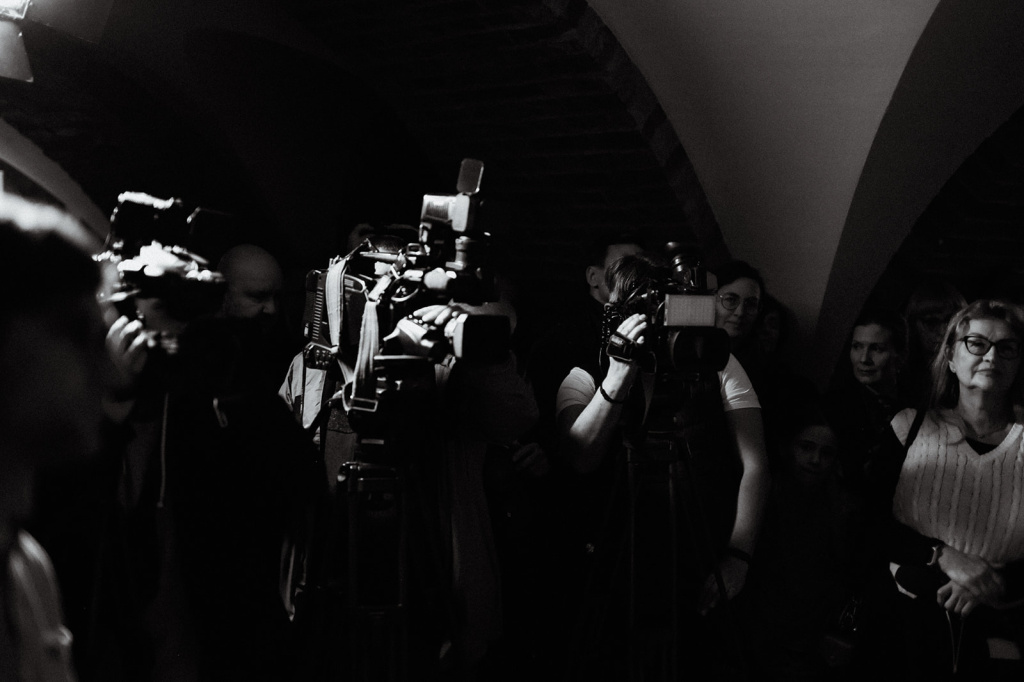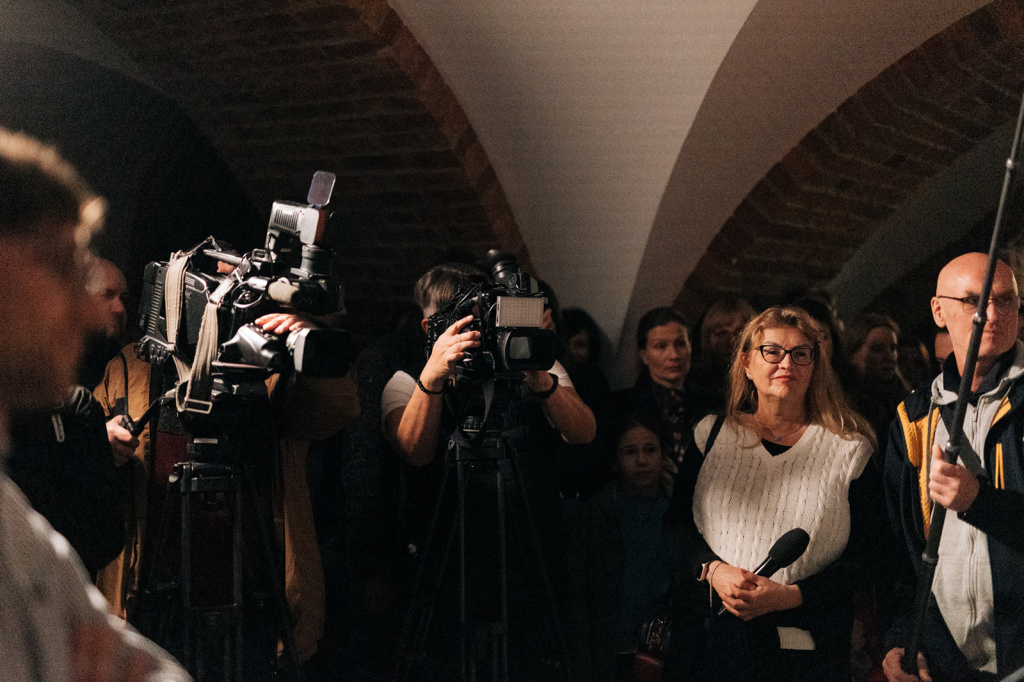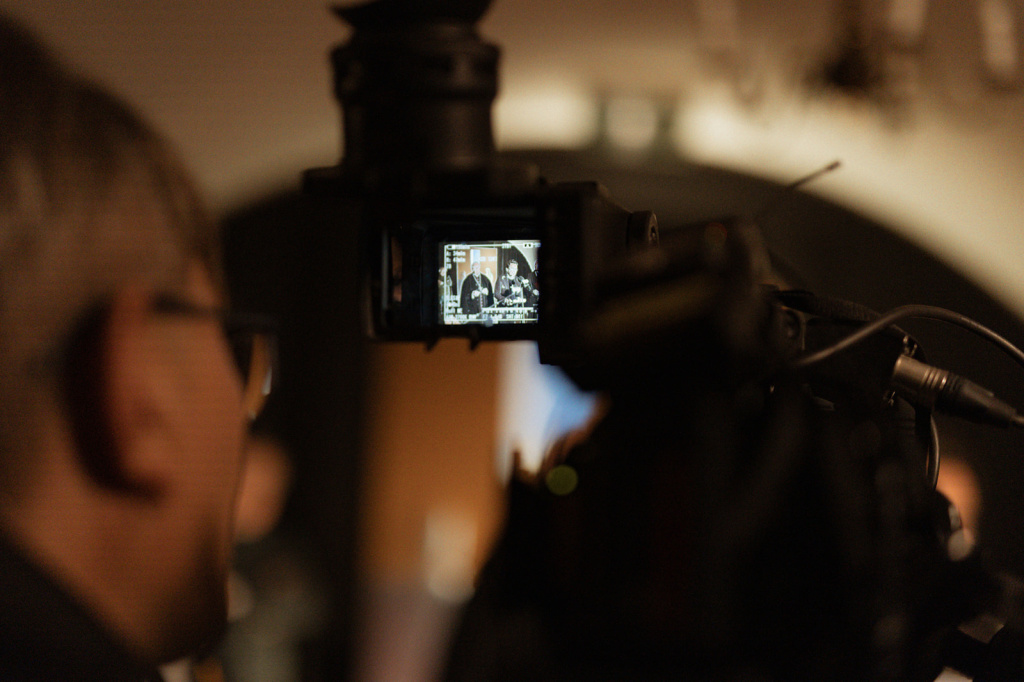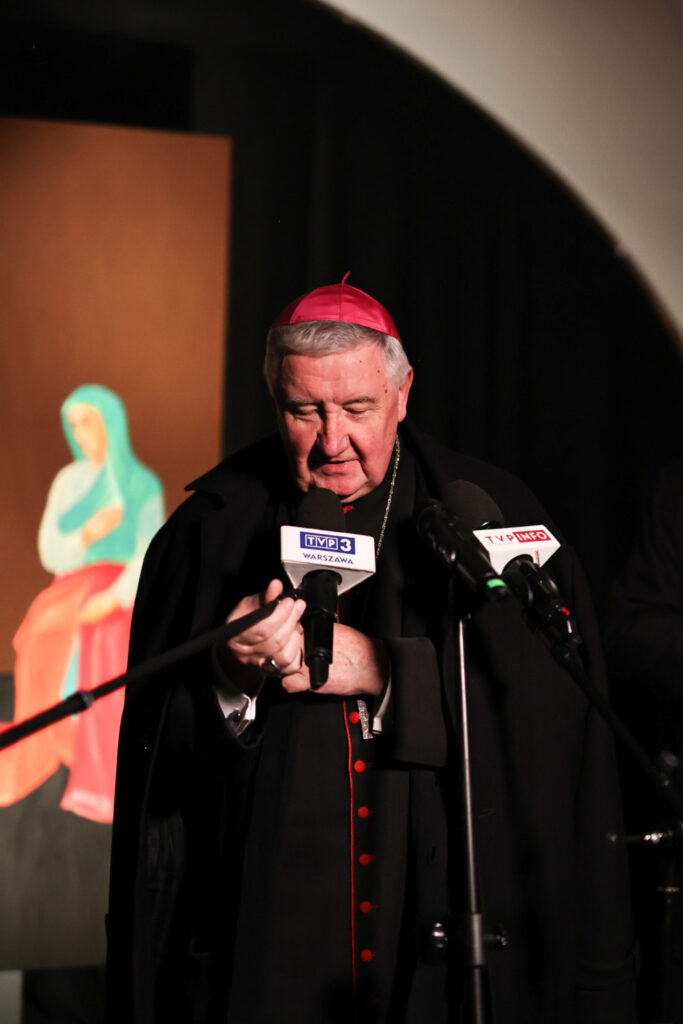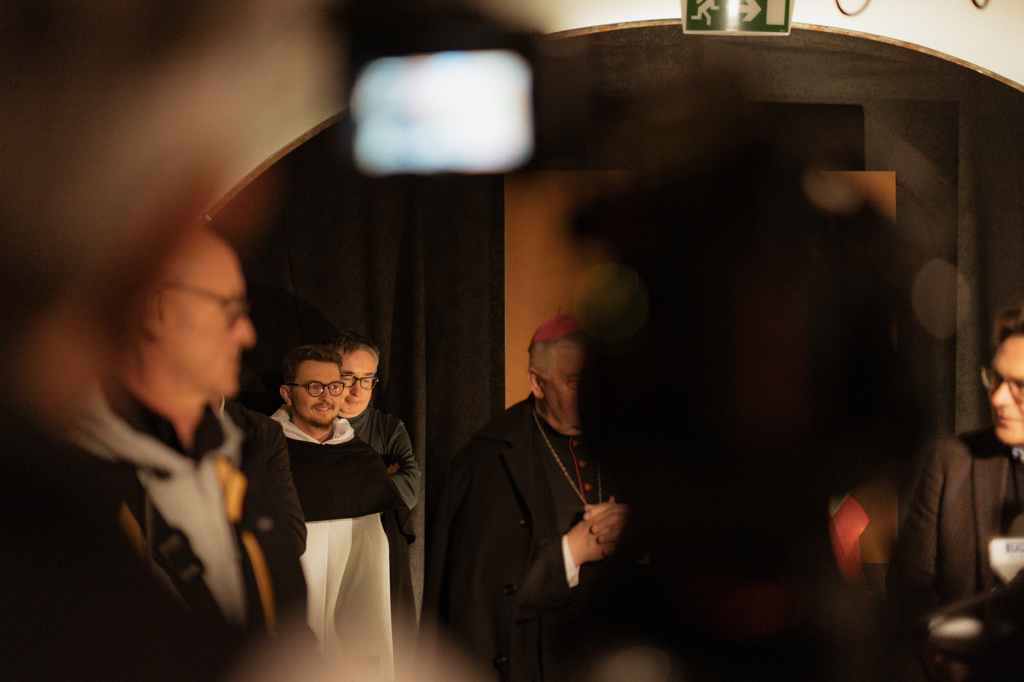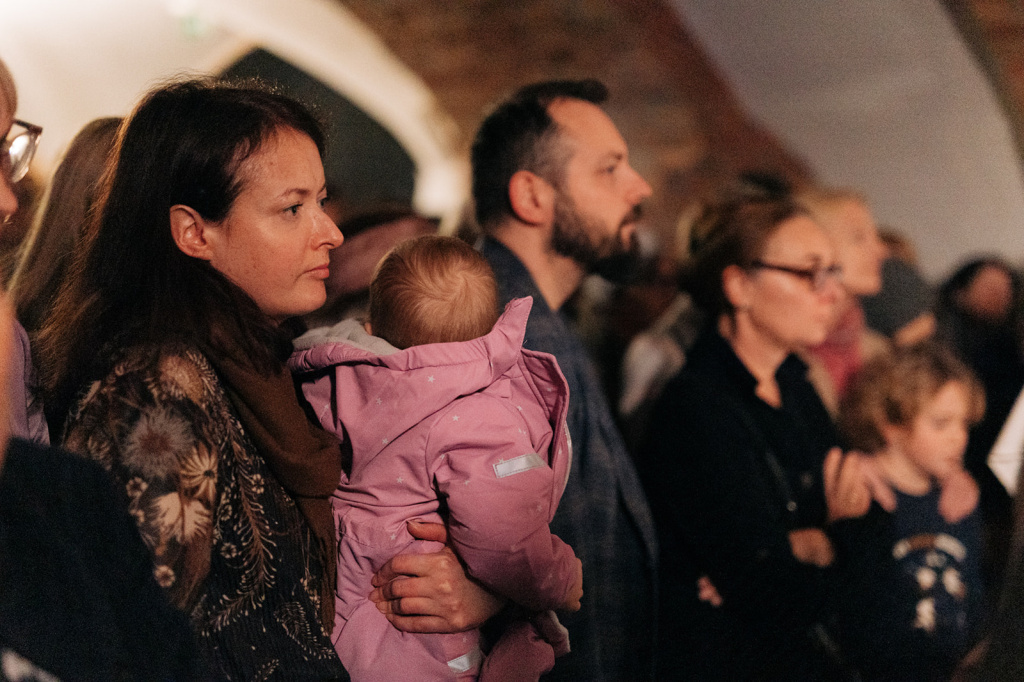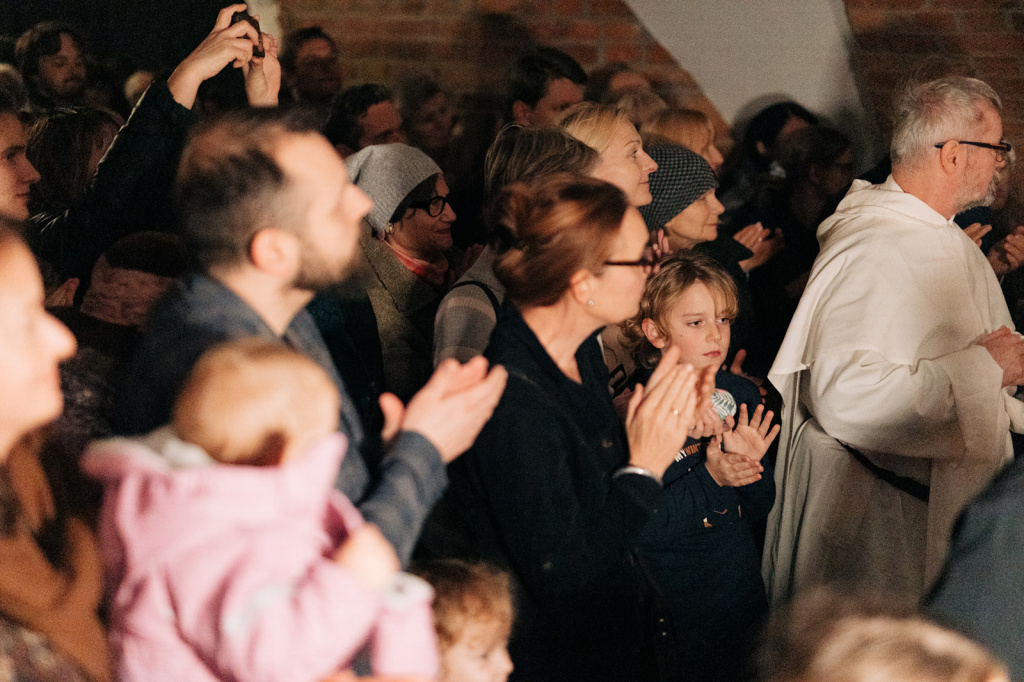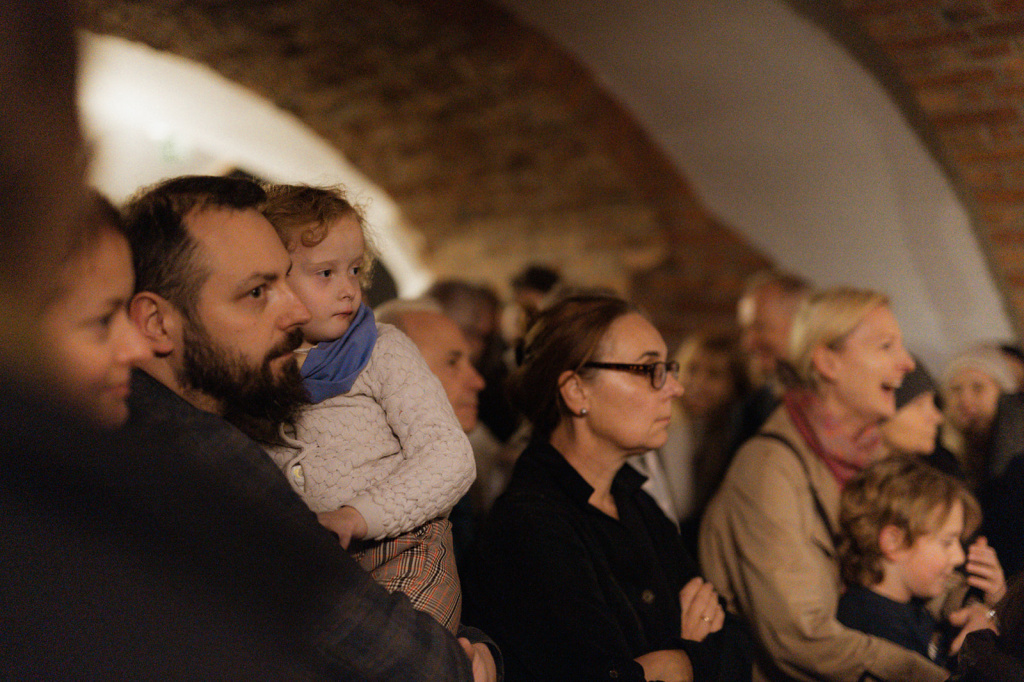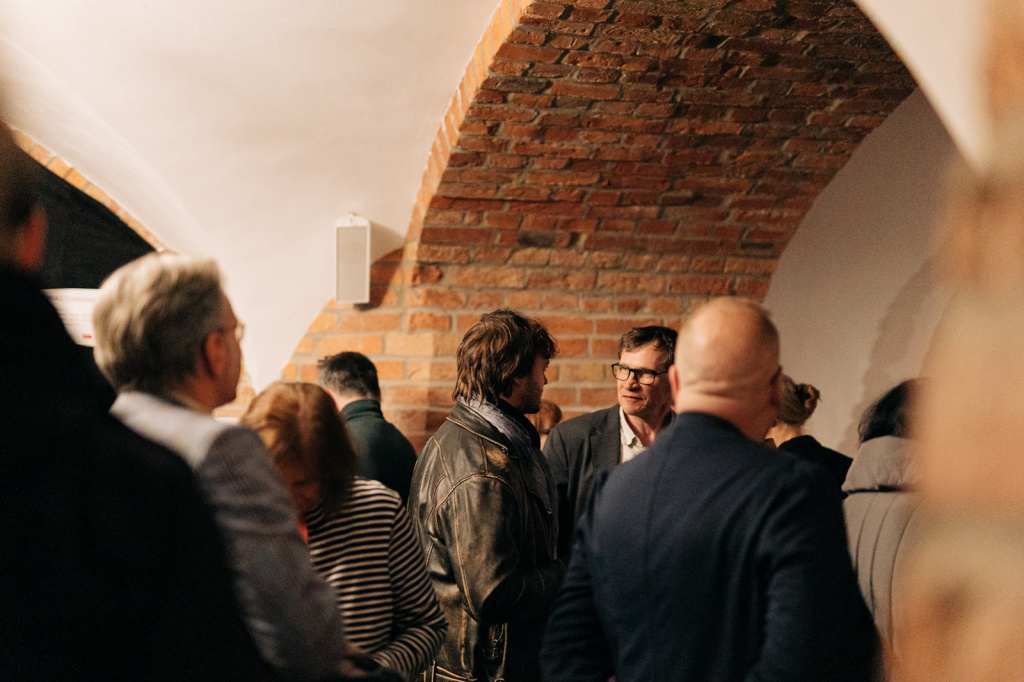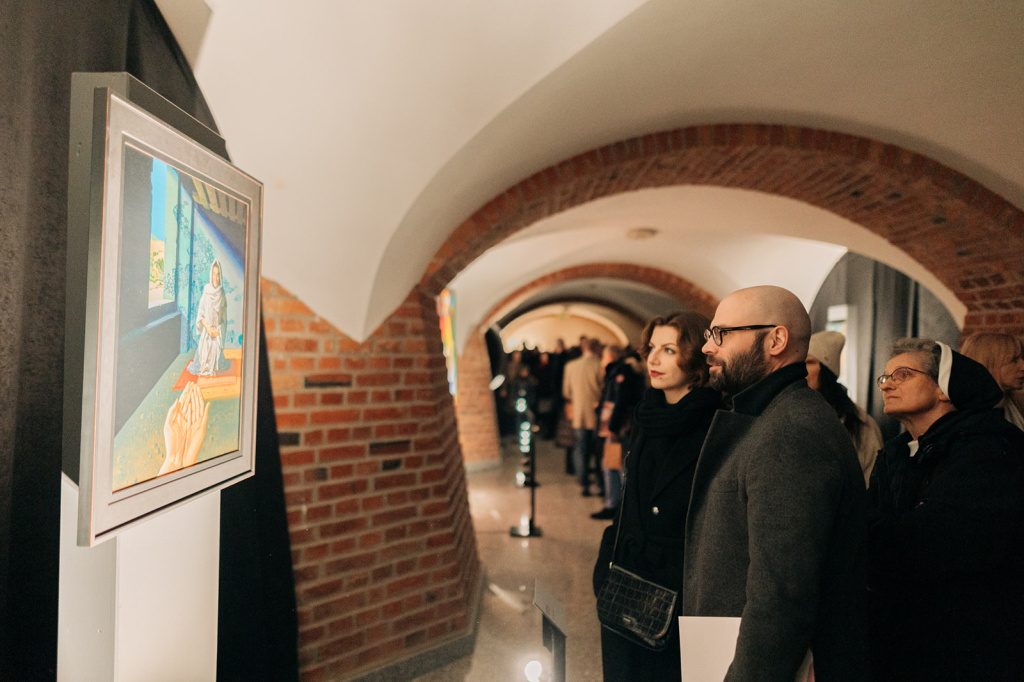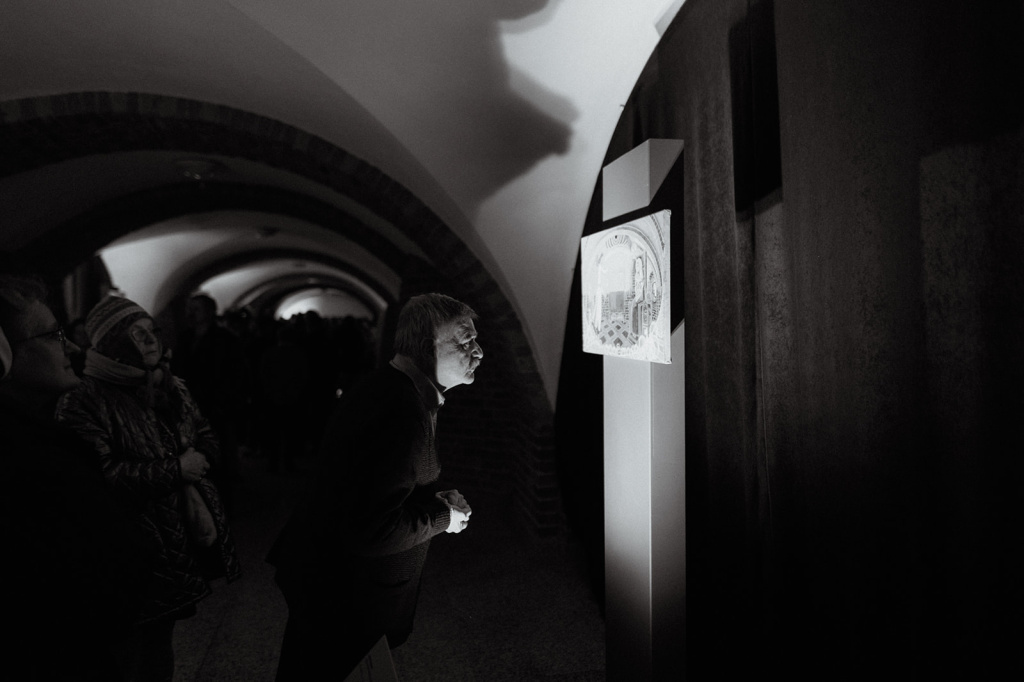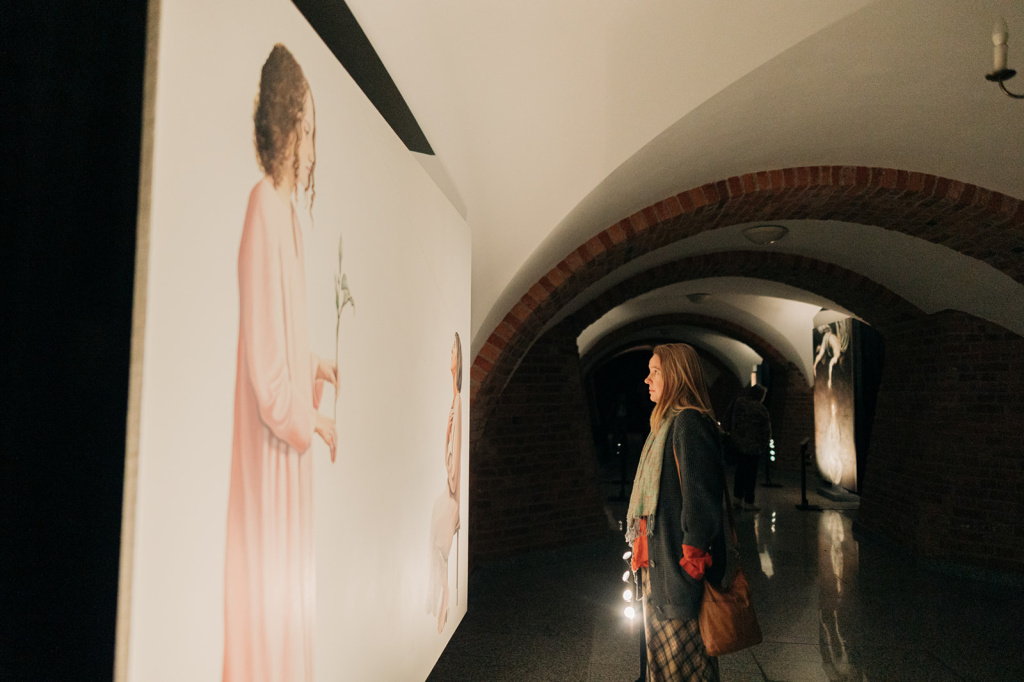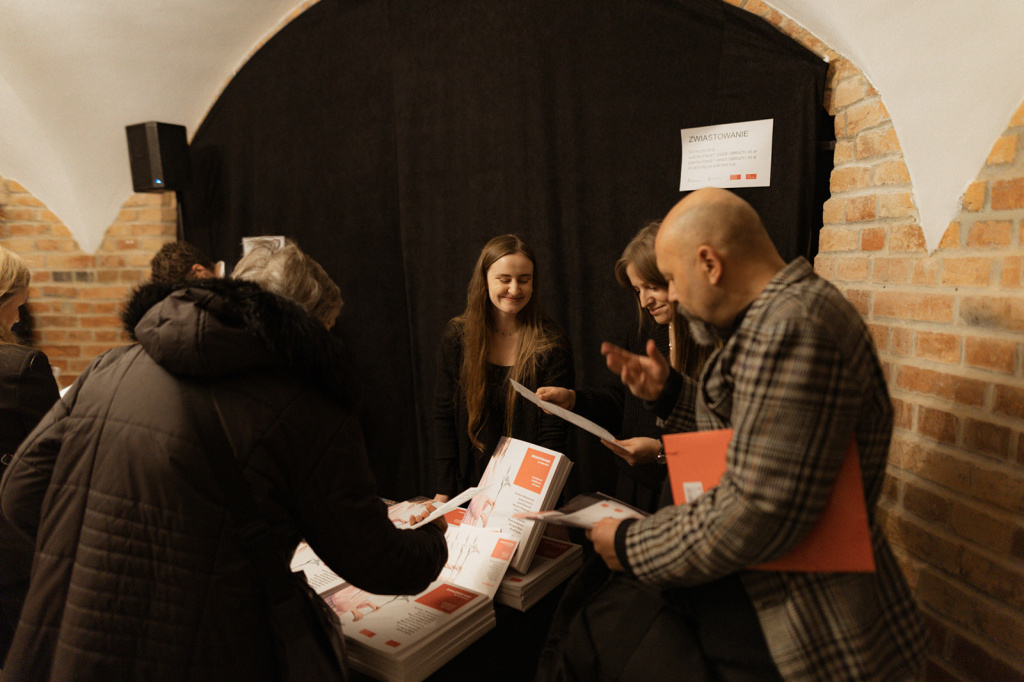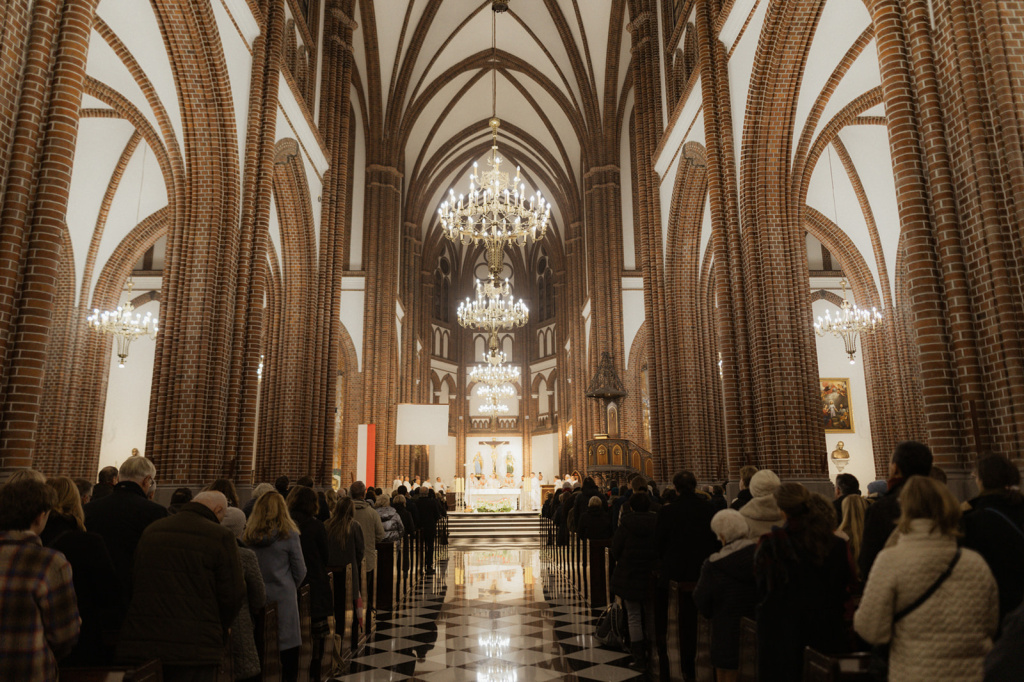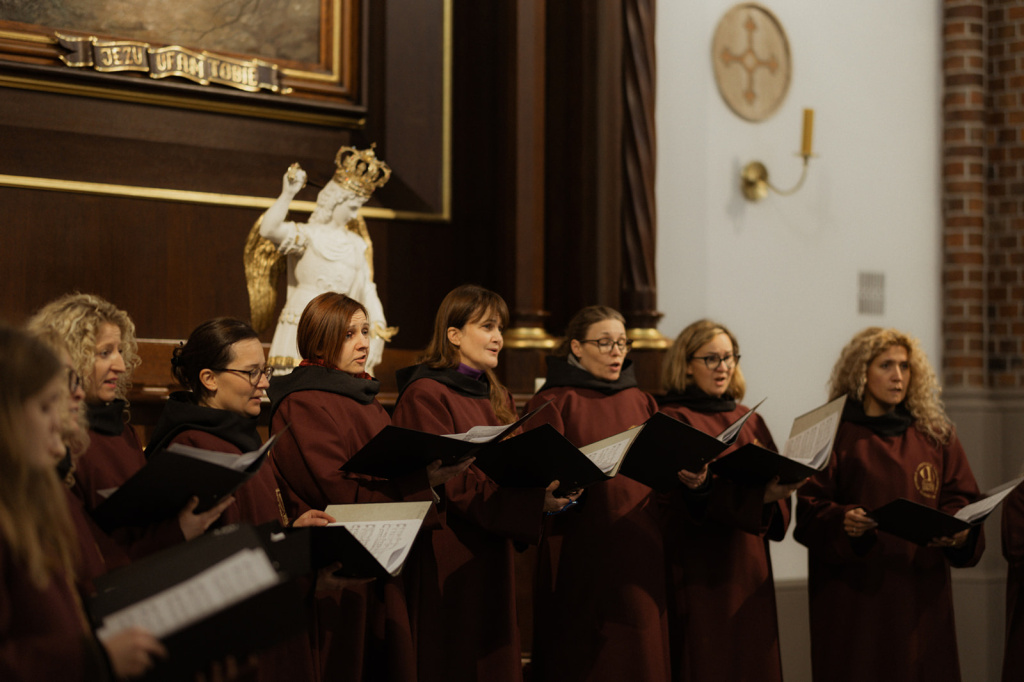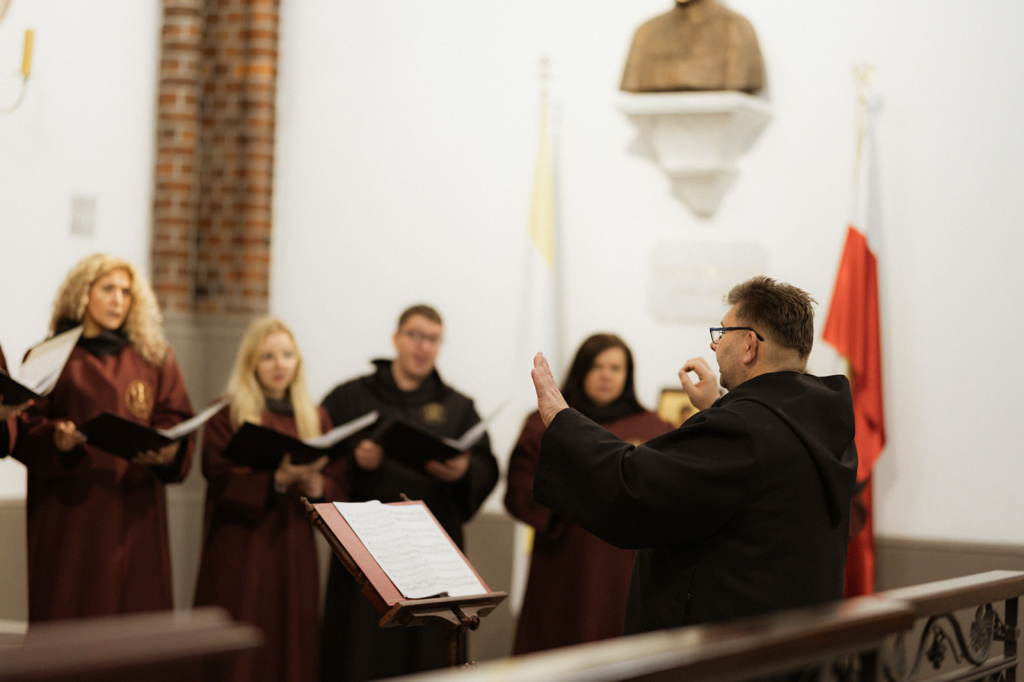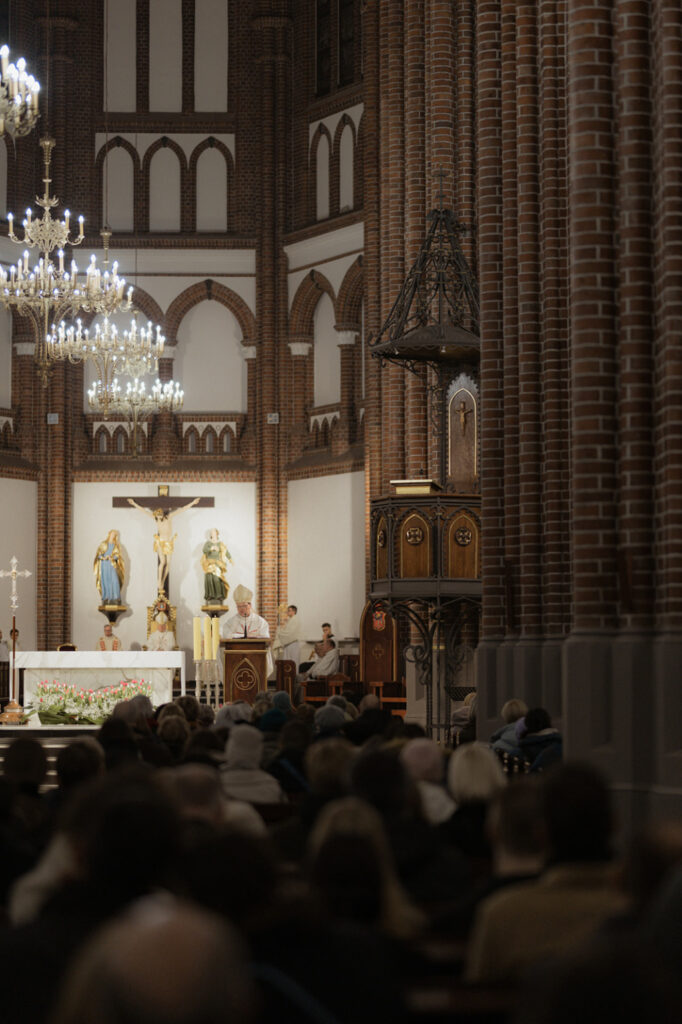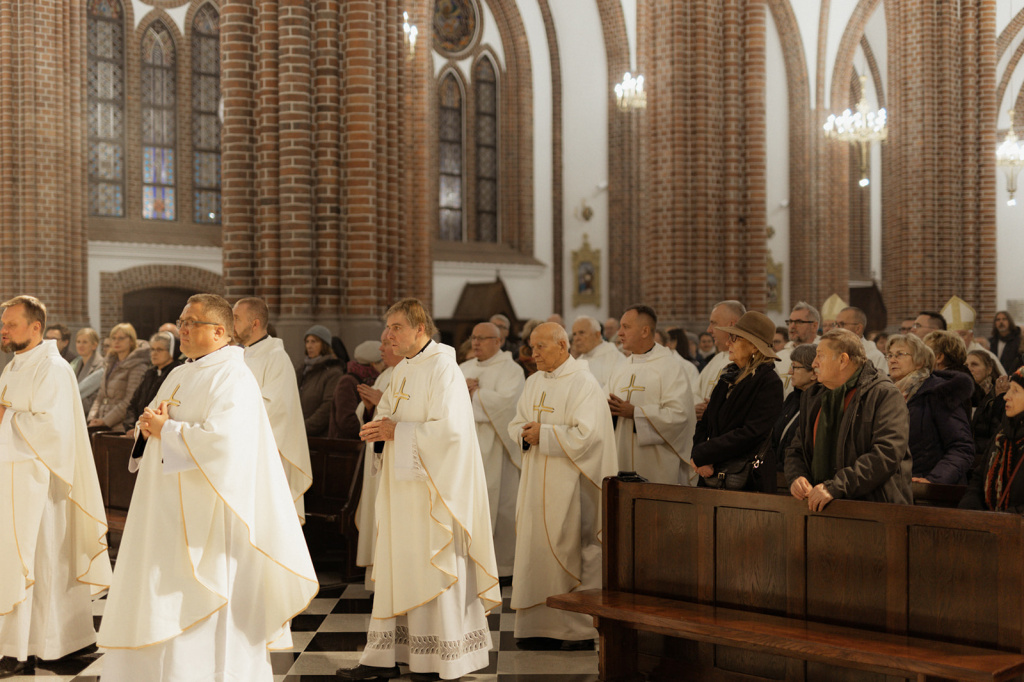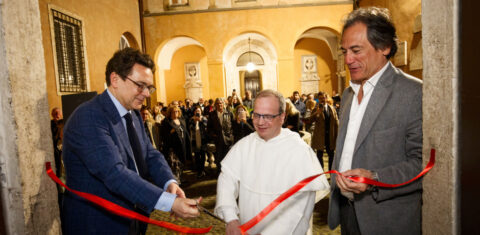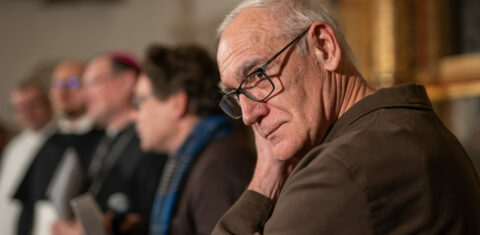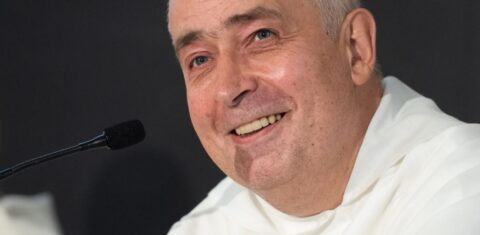On Friday, November 17, the opening of a new exhibition within the “Let’s Paint Catholicism Again” project took place in the basement of the St. Florian’s Cathedral in Warsaw. On the opening evening, twenty contemporary paintings of the Annunciation by ten Polish painters: Jarosław Modzelewski, Ignacy Czwartos, Jacek Dłużewski, Wojciech Głogowski, Jacek Hajnos OP, Krzysztof Klimek, Bogna Podbielska, Beata Stankiewicz, Grzegorz Wnęk and Michał Żądło, were viewed by numerous guests. The opening of the exhibition was preceded by a Holy Mass concelebrated by Bishop Romuald Kamiński and Bishop Jacek Grzybowski, who addressed the participants of the service with the following words in his homily:
“Neither reason will grasp it, nor the wise man will comprehend it — that is why we seek the language of faith, prayer and art, in order to retell the story of Emmanuel, of God in our midst, in our own way to our generation. So that we may recognize and glorify him when he comes again, no longer in the secret of the body, but in the glory of the Father and of all the heavenly hosts”.
The guests gathered in the Cathedral were greeted by the initiator of the project and the president of the Saint Nicholas Foundation — Dariusz Karłowicz. In the speech of the curator of the exhibition, words of gratitude were expressed to all those involved in the creation of the project “Let’s paint catholicism again”: painters, sponsors, lecturers, the team of the Saint Nicholas Foundation, Political Theology and the St. John Paul II Institute of Culture at the Angelicum in Rome. It was also mentioned that the first edition of the project, which consisted of only 10 paintings of the Divine Mercy Image, evoked a lively response, which can be taken as a good sign for future editions of the project, but also shows that the matter of sacred art is not only of interest to the organizers and participants of this project, but also is of vital interest to a much wider group of recipients. The Annunciation — as Dariusz Karłowicz summed up — is undoubtedly one of the greatest and most beautiful challenges of Christian art.
Catalogue available in our bookstore
Bishop Romuald Kamiński also took the floor and noted that looking at great works from the past, we may have a strong impression of their unattainability, but we should remember that they were created from the need of the heart of those generations – they were the result of their great experiences, so we should hope that also in the 21st century we will commune with works that are the fruit of great experiences and prayer.
On 18 November, the premiere of Wojtek Wieteska’s film “The Annunciation” marked the beginning of a conference on sacred art, which accompanied the exhibition.
The conference consisted of two debates. In the first one, artists took the floor and spoke inter alia about their preparations, but also about the dilemmas they confronted when creating their own images of the Annunciation. They shared with the large audience their very personal artistic visions and the symbolism they included in their works. Art critics also present in the panel, on the other hand, spoke about the exhibited paintings in a broader context, explaining, inter alia that the contemporaneity of these paintings consists both in their references to as well as in a cutting off from old art.
Catalogue available in our bookstore
The second debate concerned a more general issue – sacred art in theory and practice. In this part of the conference, the floor was taken by Bp. Jacek Grzybowski, Dariusz Karłowicz – curator of the exhibition and initiator of the “Let’s paint catholicism again” project, Piotr Kopszak – director of the Museum of the Archdiocese of Warsaw, Mateusz Śródoń – an icon painter, and Ewa Zalewska – director of the Museum of Icons in Supraśl. They discussed inter alia the condition of sacred art, education of artists, the need for art patronage and the related challenges faced by the Church and society today.
Dariusz Karłowicz was tempted to diagnose that there is currently a severe lack of contemporary sacred painting in the Western tradition, despite obvious and very interesting exceptions. The situation is far better with sacred painting originating from the Eastern tradition. “The creation of sacral art is a manifestation of the life of the Church and its condition” – thinks Mateusz Śródoń. In his opinion, the growing movement of interest in icons is a sign of longing for sacred art. On the other hand, Ewa Zalewska expressed her conviction that the “fashion for icons” is a manifestation of a hunger for spirituality that has been lost. “It is important to trust the artists” – she said.
Piotr Kopszak pointed out that Church patronage played a very important role in the development of art in Europe in the past. Currently, it has to be a joint effort, which is why, in his opinion, the institutions that must be created between artists and investors are more important. Such an example was the Society of Friends of Fine Arts, established in the 19th century. “If there is no organization, only good intentions will remain” – he concluded.
On the other hand, Bp. Jacek Grzybowski, answering questions about Church patronage, pointed out that in this matter one cannot ignore the current situation of the Church, secularization processes, etc. “The most beautiful quality, and at the same time difficult to achieve, is courage. We must do everything we can to make sure that it is born in us like good desires and ideas” – he said.
Krzysztof Domarecki, an entrepreneur and patron of the art project, also joined the discussion on Church patronage, reminding that the first patrons of the arts were courts, and bishops joined the patronage only when they also had their own courts. In his opinion, currently expecting such patronage is an ahistorical approach, because in societies where the dominant criterion is money and individualism, there is no motivation to build good. “Upon understanding the spiritual situation we are in, it is worth finding new ways of patronage that will be adequate for the modern times, for democracy, liberalism and capitalism, and the way the modern world functions.”
The two panel discussions were moderated by Mikołaj Marczak and Tomasz Herbich.
We would like to remind you that the paintings presented at the vernissage are intended for sale. Ten of the twenty artworks have been intended for church interiors, and ten smaller ones for the purpose of private worship. If you are interested in purchase, please contact us [email protected]
All images can be viewed at LetsPaintCatholicismAgain
The exhibition can be seen until 31 January in the basement of Cathedral of St. Michael the Archangel and St. Florian in the Warsaw-Praga diocese, at 3 Floriańska Street in Warsaw. Monday to Saturday from 12:00 to 20:00, Sunday from 8:00 to 21:30.
***
The aim of the “Let’s Paint Catholicism Again” project is the renewal of sacred art through the return to the Church of paintings of high artistic quality and characterized by a contemporary painting language, as well as the renewal of patronage of such art.
“The documents of the Church clearly state that great art should be present in temples, but the practice is different. Western sacred art is dying. The Good News that has not been translated into the language of 21st-century culture is increasingly becoming mute or incomprehensible. This is a serious problem – but also a great challenge” – explains Dariusz Karłowicz. “To express the teachings of Christ in the language of the next generation is the duty of those who are called to communicate the Truth to the world. This is a kind of our cooperation in the work of the Incarnation. For Christianity, culture is not a luxury, but the air we breathe” – he adds.
As part of the “Let’s Paint Catholicism Again” project, contemporary sacred and religious paintings are created at the request of the organizers and thanks to the generosity of private patrons of the arts. The intention of the initiators is to realize 21 great themes of Christian painting. In 2021, for the first time, 10 artists were invited to paint new images of Merciful Jesus. In 2022 and 2023, the exhibition of paintings visited Kraków, Warsaw and Rome. Almost all of the paintings were purchased for churches in Poland. The plan for the following years is the remaining 19 mysteries of the Rosary. An integral part of the project is the initiation of reflection on the theology of art through seminars, lectures, conferences and a series of books devoted to theology, philosophy and history of sacred art. The organizers hope that the project will move other communities. Among the people who were inspired by the plan of meditation on the mysteries of the Rosary is a well-known and respected icon painter, co-organizer of the Study of the Christian East at the Dominican monastery in Warsaw – Mateusz Śródoń. He offered creative work to the artistic community gathered around him, broadening the perspective to include the art of the Christian East.
The “Let’s Paint Catholicism Again” project was initiated by “Political Theology”, the Saint Nicholas Foundation and the St. John Paul II Institute of Culture from the Pontifical University of St. Thomas Aquinas (Angelicum) in Rome and is being developed thanks to the patronage of private donors: Danuta and Krzysztof Domarecki, Jolanta Domańska-Gruszka and Mirosław Gruszka, Wojciech Piasecki, Dorota and Tomasz Zdziebkowski.
photos by Julia Marconi
